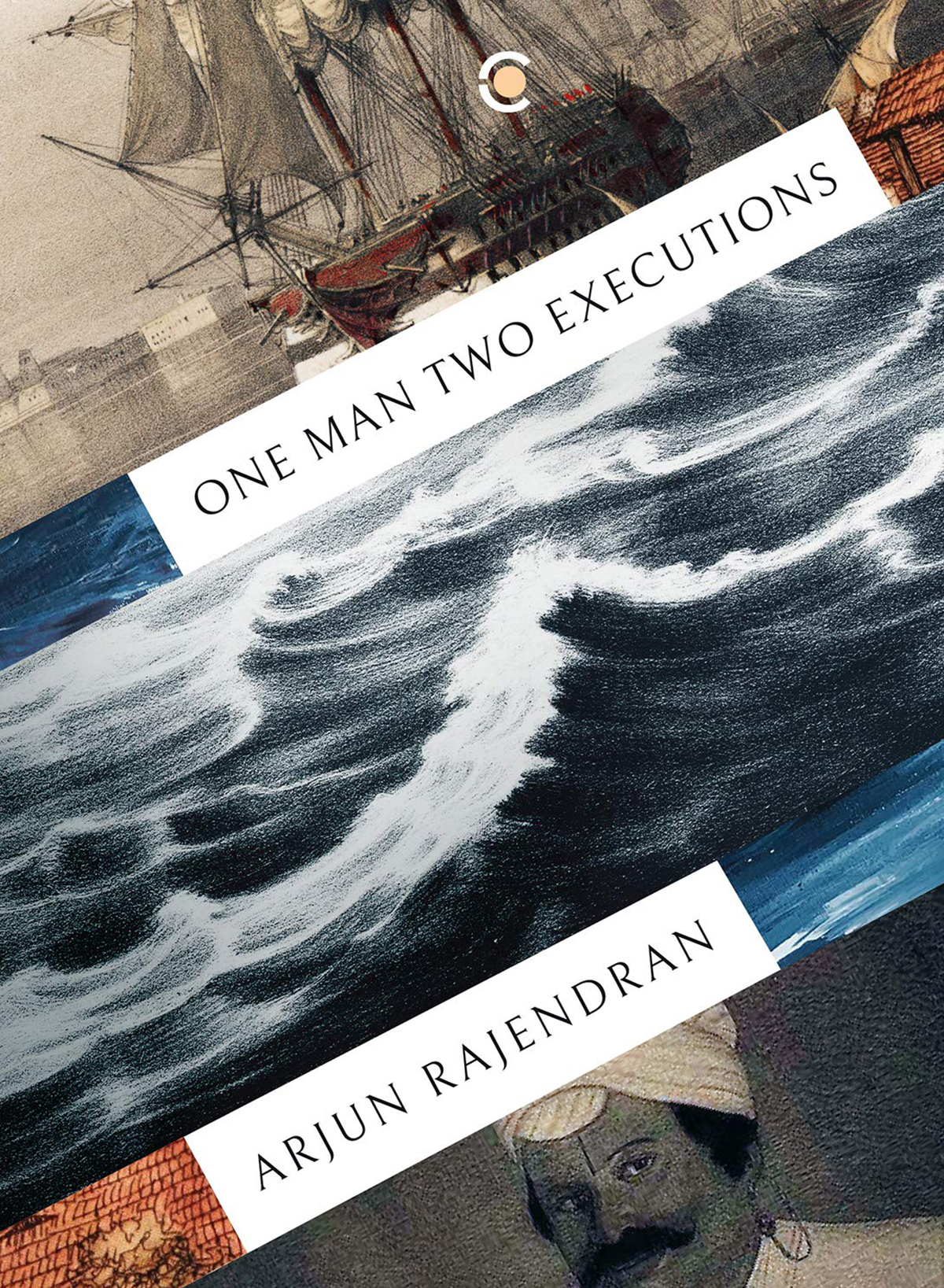
Imagine a piece of land: armies marching against each other on its face, the sea around it rippling with ships, a roulette of rivals out-maneuvering each other through secret plans and pacts to own, its coast dotted with forts crumbling under cannon balls. Now imagine that land to be a part of India.
This was the state of affairs in the 18th century of the country, with the Mughal empire on the wane, various factions such as the Marathas, squabbling over different areas, and rival European countries battling to gain a foothold.
The first part of Arjun Rajendran’s poetry collection, One Man Two Executions, takes us back to the politics and intrigue of that era. While a lot has been written about the colonial past of India under the British, not much attention has been given to the fact that at one time, the French and British were battling over the southern states. The then governor of Pondicherry, Joseph François Dupleix, in fact, dreamt of a French Empire in India. While his dreams were destined to wither, his days of ruling over Pondicherry, the differing factions and religious followers, and the decisive battle over the city of Madras during the Carnatic Wars, have been noted by historians. And by an important witness, the dûbash (interpreter) to the French governor of the time, Ananda Ranga Pillai.
How then do these facts of history transform into flights of poetic fancy? In a book that took him three years to complete, as mentioned in an interview, Rajendran culled out the interesting facts from Pillai’s diary, conducted extensive research, including meeting Pillai’s descendants, and travelled to the National Maritime Institute at Greenwich. But his skill lies in integrating the historical events mentioned in the diary into vignettes of life from those times, and his interpretation from that period through the vivid use of imagery as well as subtle linking of facts to emotions. Each poem describes events ranging from the prosaic to the bizarre cyclic turns of history including ships at the ports, comets blazing through the sky, eclipses, and rivalries and power struggles between different sections of the society in Pondicherry. After all, as Julian Barnes wrote in The Sense of an Ending, “History isn’t the lies of the victors,… It’s more the memories of the survivors, most of whom are neither victorious or defeated.”
Consider the poem, Where the English Encamped, which specifically mentions the battle over the fort in Madras:
1748
The hookah that burnt down the counting house
wasn’t an arsonist; that fire wasn’t
translation’s child.
But war clouds now blow
over from the French into Tamil,
from the governor’s lips into the peons’
palms—each coin,
Or the title poem, One Man: Two Executions, that showcases how bias can turn into a stubborn hate where the priest defies the convention of pardoning a convict if the execution is not carried out for some reason (in this case the rope broke). As a result, the man gets condemned to hang for a second time!

One Man Two Executions
By Arjun Rajendran
Context
pp. 140, Rs 499
What is fascinating is the transformation of business-like diary entries into pieces that evoke both the sense of that era as well let us extrapolate into deeper meanings. Consider the poem Durian. The diary entry (the diaries of Anand Pillai are actually available online, as mentioned by Rajendran, and curious, I had looked them up) mentions a ship with a package of the smelly fruit, durian, and how there is no explanation of how this package ended up at Pondicherry. Rajendran’s dexterity is in turning this incident into the poem, where one can actually “smell” the noxious fumes, as well as in showing the extent of the French colony that extended up to Chandernagore, a city near Calcutta.
1746
Which ill-wind brought the ship to Pondichéry,
twenty durians in its hold?
The package, opened in the governor’s house,
prompts ancestors in portraits
to clench their noses; a fruit reaching across
death, …
Through windows, the durians attack natives,
the fort, and enemy sepoys
by the river, routing them
—muskets abandoned—till Chandernagore
Another entry mentions a temple being desecrated. Bridging the gap between the past and the present, this event is shown through the eyes of the people who are considered unfit to enter the temple otherwise, but are the only ones who will clean the filth, while the worshippers and Governor’s wife carry on with their lives. The reader is compelled to consider the fact that this discrimination continues up to the present day:
1747
No priest in the Iswaran temple will clean the filth hurled
from St Paul’s Church
…They arrive: children,
and their children, to scoop shards, stool, eyes never meeting
the worshippers’…
This connection between the past and the present continues with the other sections of the book where the poems are more personal. The theme of history, both personal and political, loss, love, science, and the fragility of memories are the common themes underlying the rather disparate sections.
How They Went, for example, compresses the loss of beloved grandparents into simple, yet singeing lines:
My grandmother finally shut her
eyes, her last year spent in coma,
sinking deeper everyday…
My grandfather, with a lawyer’s directness,
was quite the opposite, he quickly died…
Everything changed within seconds,
But his law-books are still there,
upright and thick-skinned.
History, science, love, and loss — a unique combination that only a writer with a sure touch can carry off. And Arjun Rajendran’s One Man Two Executions is testimony to how even such seemingly disparate ideas can be mixed in an engaging whole.
(This review was part of our June issue, which got delayed due to the second wave and was released in October)
Comments
*Comments will be moderated











